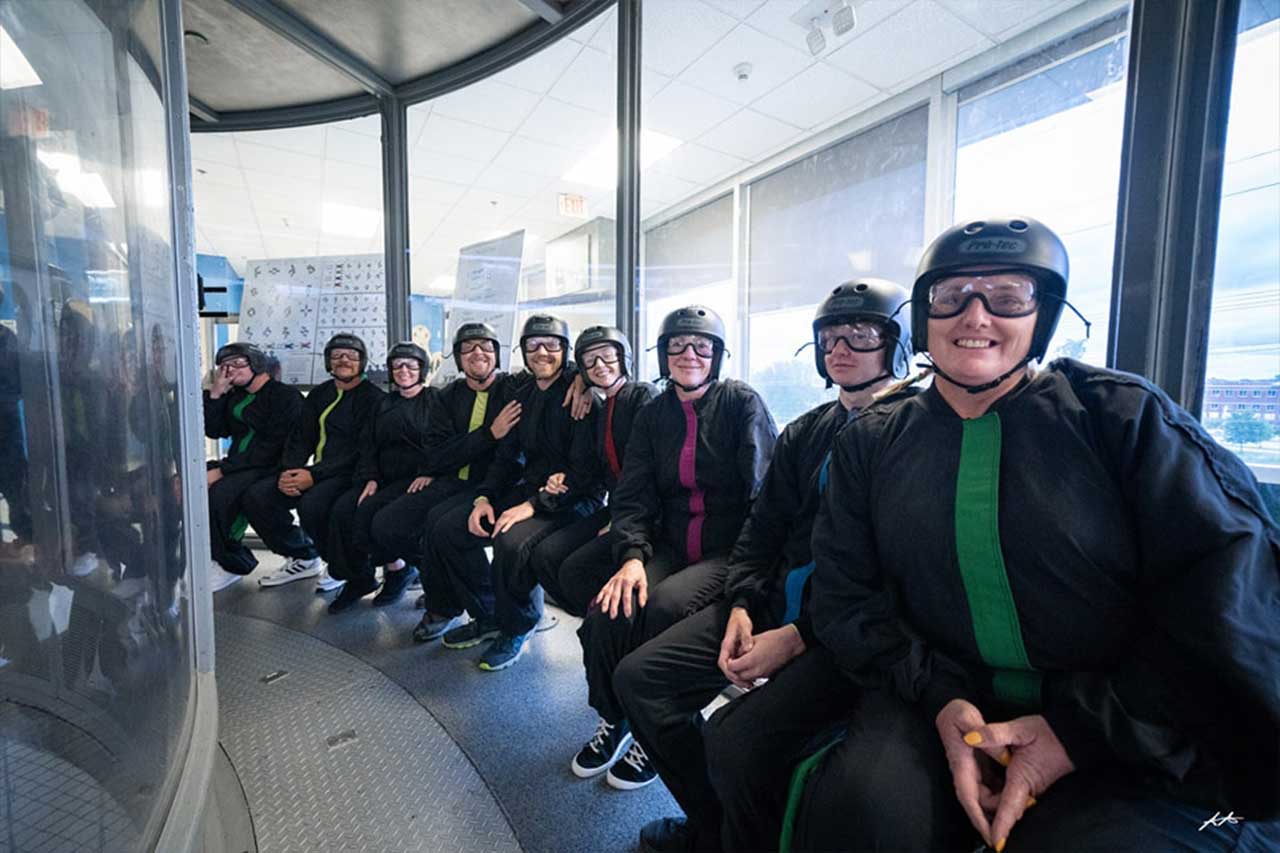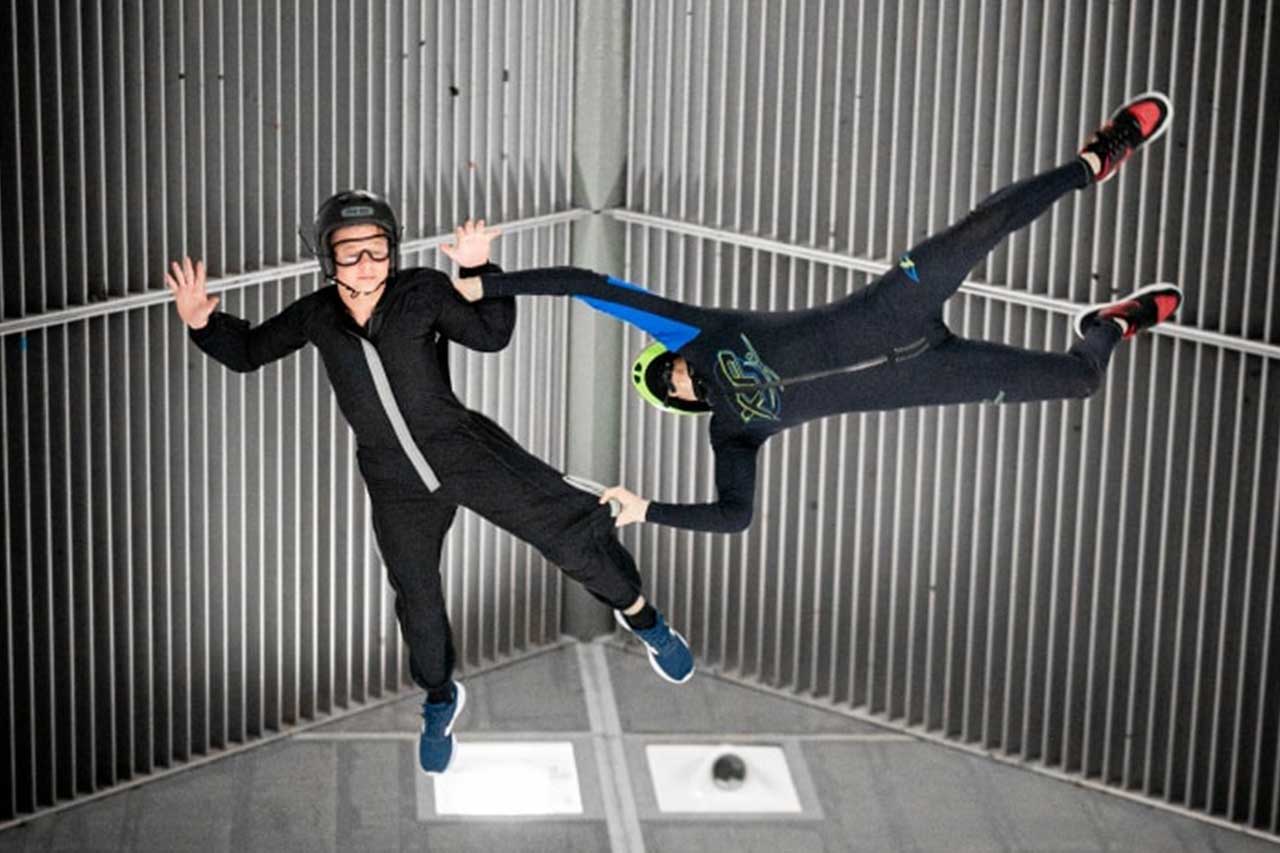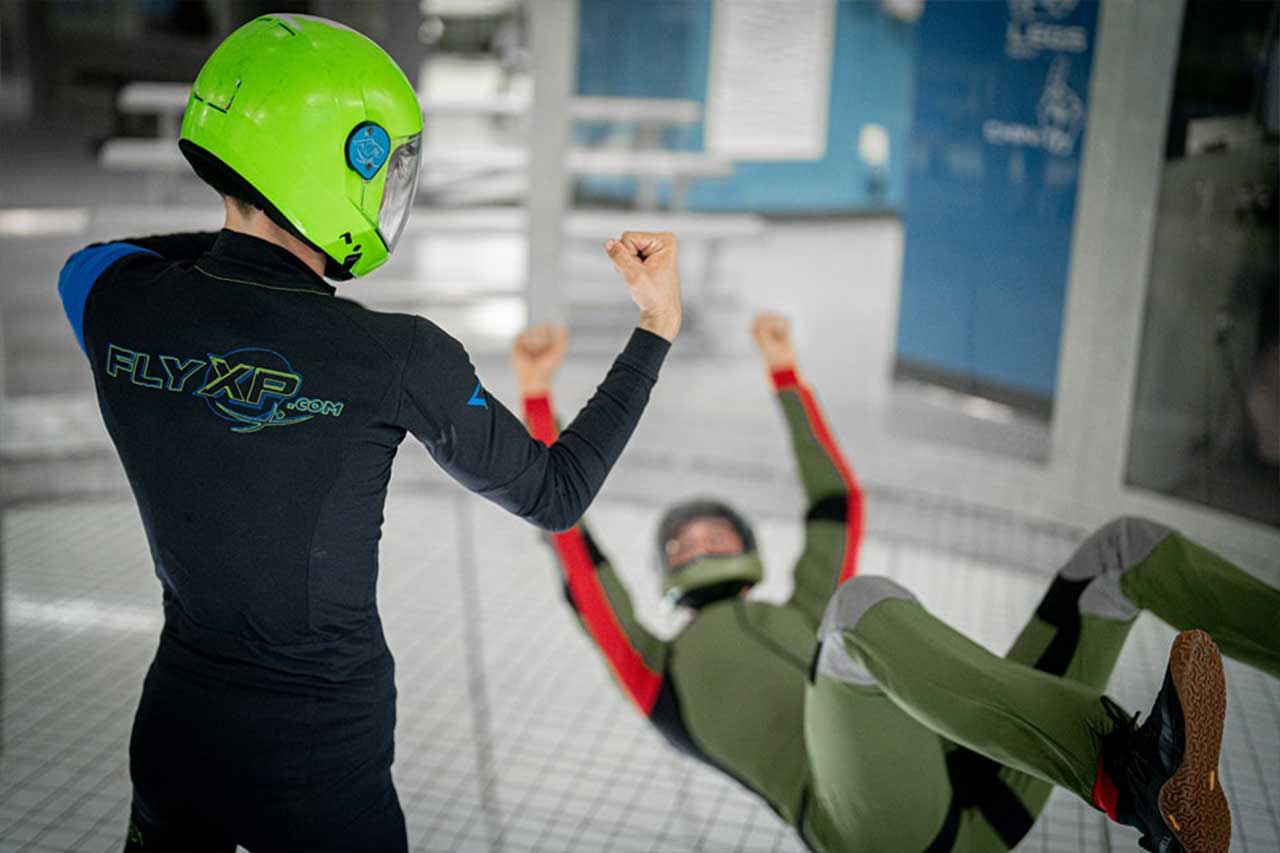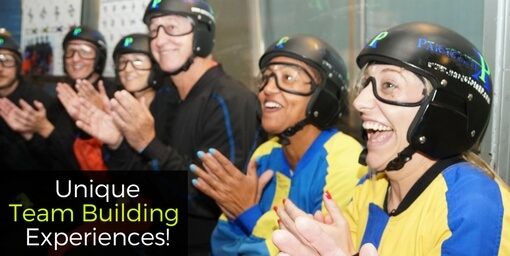Can You Do Indoor Skydiving with Back Problems?
Thursday, June 6, 2024
One of the major appeals of indoor skydiving is its accessibility. Even children as young as three years old can participate! This inclusivity might lead you to assume that indoor skydiving is easy. While it’s a great place to learn, indoor skydiving does require some physical effort. So, is indoor skydiving hard on your body? This article will shed light on what’s involved and highlight who should not do indoor skydiving.

What is Indoor Skydiving?
Indoor skydiving simulates the sensation of skydiving by allowing you to float on a column of air. The wind tunnel uses powerful fans that generate an updraft, creating an airflow strong enough to lift a person off the net. Now that’s some power! For instance, Paraclete XP, the largest vertical wind tunnel in the United States, stretches 53 feet tall and reaches wind speeds up to 180 mph! Indoor skydiving is as close as you can get to the real deal.
Is Indoor Skydiving Safe?
Indoor skydiving is generally considered safe for people of various ages and physical abilities. You will fly in a special suit, helmet, and goggles, and be guided by professional instructors throughout the indoor skydiving process.
- Initial Training: Before entering the wind tunnel, you’ll receive training on body positions, hand signals, and safety protocols from experienced instructors.
- In-Flight Guidance: Instructors often accompany beginners in the tunnel to provide hands-on support, help you maintain the correct body position, and make the most of your time in the wind.

Physical Demands
While indoor skydiving is widely accessible and generally considered safe, it does require some physical exertion. And while instructors make it look easy, it’s much more involved than it seems at first glance. Having back pain or issues could prevent you from being able to fly comfortably, and more importantly, safely. Here are the key physical aspects involved:
- Core strength: Maintaining stability and controlling body position in the wind tunnel requires strong core strength. Flyers need to engage their core to hold a stable body position and make precise movements.
- Arch: The skydiving arch is a fundamental body position where the torso curves upward, hips are pushed forward, legs are spread slightly, and arms are bent at shoulder height. Keeping a consistent arch throughout your flight is crucial for maintaining stability and control.
- Upper Body Strength: While not as critical as core strength, some upper body strength is needed to hold stable positions and make adjustments against the wind.
- Flexibility: Flexibility is important for maneuvering in the air. Flyers need to adjust their limbs and body position (including arch!) to control their movements.
- Endurance: Although flight sessions are typically short (ranging from a few minutes to about ten), they can be physically demanding. Holding the correct body position against the force of the wind can be tiring, especially for beginners.
- Coordination: Good coordination is necessary to make controlled movements in the air. Flyers must control their arms, legs, and core while achieving desired movements and staying balanced.
- Breath Control: The force of the wind can make breathing more challenging. Flyers need to remain calm and control their breathing to avoid feeling breathless or fatigued.

Can You Skydive with Back Problems?
As we’ve discussed, Indoor skydiving does put some strain on your body, particularly on your core and back muscles. If you have back problems, it’s crucial to consider the following:
- Consult Your Doctor: Before trying indoor skydiving, consult with your doctor to get personalized advice based on your specific condition.
- Assess the Severity: Minor back issues might not prevent you from flying, but more serious conditions could be aggravated by the physical demands of maintaining the skydiving arch and handling the wind force.
- Facility Policies: Inform the indoor skydiving facility about your back problems. They can provide additional guidance and may have specific policies or accommodations for individuals with medical conditions.
Suitability and Adaptations
Most facilities have minimum age and weight requirements to ensure safety. While facilities can sometimes accommodate individuals with limitations or physical disabilities, there are restrictions based on general fitness and health. People with certain health conditions, such as heart problems, back issues, or shoulder dislocations, should consult with their doctor before considering this activity. It is also important to inform the facility beforehand if you have any medical conditions.
If your doctor gave you the go-ahead and you’re ready to fly, awesome! Contact us today to book your indoor skydiving flights. We can’t wait to get in the wind with you.

The entire staff is extraordinarily professional and gracious. They are extremely safety conscious while at the same time giving everyone as much freedom as they can safely manage. A rare combination. While we (adults) were there, our instructor also suited up and trained a 2-year-old boy and a three-year-old girl.
Jack Berry
Copyright © 2024, Paraclete XP Indoor Skydiving, All Rights Reserved.
DropZone Web Design & Marketing by Beyond Marketing, LLC